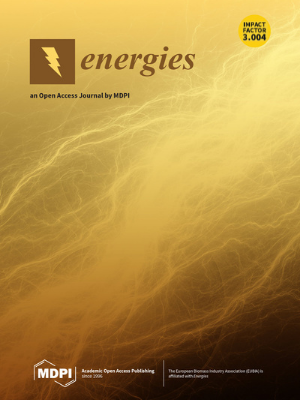Rock–Oil–Brine Dominant Mechanisms in Smart Water Flooding
IF 3.2
4区 工程技术
Q3 ENERGY & FUELS
引用次数: 1
Abstract
Recent research has highlighted wettability alteration as the main consequence of the different mechanisms involved in technologies such as adjusted brine composition water flooding (ABCW) and low-salinity water flooding (LSW). However, studies are still needed to give a phenomenological explanation, and the most influential components of the system (rock–oil–brine) must be clarified. This work focuses on determining the most relevant variables for the smart water effects to occur. Static (contact angles) and dynamic tests (coreflooding) were conducted. For the static tests, aged Berea slices, a specific crude oil (27° API, 10.5 cp at 60 °C), and mono and divalent inorganic salts (Na+, K+, Ca2+, and Mg2+/Cl−) were used in 3 different concentrations of 1000, 3000, and 5000 ppm (ionic strength variation between 0.015 and 0.06) to establish the wettability state by measuring the contact angles of the system. When salts containing chloride were evaluated, a decrease in oil wettability was observed at 5000 ppm. At 3000 and 1000 ppm, tendencies depended on the particular cation. Three brines were selected from the contact angle experiments to be used in coreflooding assays, considering a particular design to identify ion exchange from the rock–oil–brine system. The first assay was carried out in the absence of crude oil as a baseline to determine the ion exchange between the brine and the rock, and a second test considered crude oil to provide insight into ion exchange and its effect on displacement efficiency. Capillary electrophoresis was used in this research as a novel contribution to the systematic study of oil displacement tests, and it has proven to be a powerful tool for understanding the mechanisms involved. The results show that the variations in the concentrations detected in the displacement effluents were the product of the interactions between rock, oil, and brine since the concentrations measured in the absence of oil phase were comparable to those in the injection brine. Significant variations in the effluent ion concentrations were determined for the different brines used, and increases in the pressure differentials were observed for the KCl and CaCl2 brines. These results suggest that the oil–brine ion exchange (salting in/out) represents a relevant mechanism to explain the observed displacement efficiencies and differential pressures. The ionic enrichment of the water phase due to the salting in/out effect needs to be better understood.智能水驱中岩石-油-盐水主导机制
最近的研究强调,润湿性变化是调整盐水组分水驱(ABCW)和低盐度水驱(LSW)等技术所涉及的不同机制的主要结果。然而,仍然需要进行研究来给出现象学解释,并且必须澄清系统中最具影响力的组成部分(岩石-石油-盐水)。这项工作的重点是确定智能水效应发生的最相关变量。进行了静态(接触角)和动态试验(岩心驱替)。对于静态测试,老化的Berea切片、特定原油(27°API,60°C时10.5 cp)以及一价和二价无机盐(Na+、K+、Ca2+和Mg2+/Cl−)在1000、3000和5000ppm的3种不同浓度(离子强度变化在0.015和0.06之间)中使用,以通过测量系统的接触角来建立润湿性状态。当评估含氯化物的盐时,在5000ppm处观察到油润湿性的降低。在3000和1000ppm时,趋势取决于特定的阳离子。从接触角实验中选择了三种盐水用于岩心驱油分析,考虑到一种特殊的设计来识别岩石-石油-盐水系统的离子交换。第一次测试是在没有原油作为基线的情况下进行的,以确定盐水和岩石之间的离子交换,第二次测试考虑原油,以深入了解离子交换及其对驱替效率的影响。毛细管电泳被用于这项研究,作为对驱油测试系统研究的一项新贡献,它已被证明是理解相关机制的有力工具。结果表明,在驱替流出物中检测到的浓度变化是岩石、油和盐水之间相互作用的产物,因为在没有油相的情况下测得的浓度与注入盐水中的浓度相当。测定了所用不同盐水的出水离子浓度的显著变化,并观察到KCl和CaCl2盐水的压差增加。这些结果表明,油-盐水离子交换(盐析/盐析)代表了解释观察到的驱油效率和压差的相关机制。需要更好地理解由于盐析入/出效应引起的水相的离子富集。
本文章由计算机程序翻译,如有差异,请以英文原文为准。
求助全文
约1分钟内获得全文
求助全文
来源期刊

Energies
ENERGY & FUELS-
CiteScore
6.20
自引率
21.90%
发文量
8045
审稿时长
1.9 months
期刊介绍:
Energies (ISSN 1996-1073) is an open access journal of related scientific research, technology development and policy and management studies. It publishes reviews, regular research papers, and communications. Our aim is to encourage scientists to publish their experimental and theoretical results in as much detail as possible. There is no restriction on the length of the papers. The full experimental details must be provided so that the results can be reproduced.
 求助内容:
求助内容: 应助结果提醒方式:
应助结果提醒方式:


